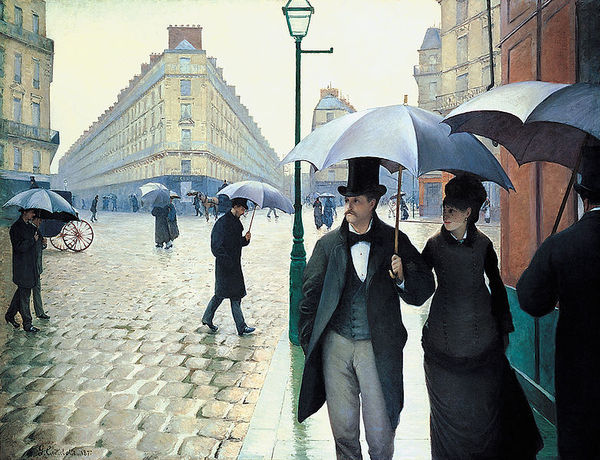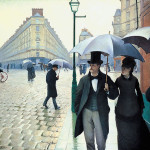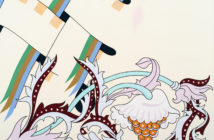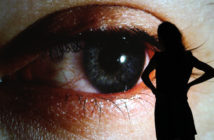Kurt Cole Eidsvig is one of the first recipients of Art Writing Workshop fellowship, a collaboration between the Creative Capital | Warhol Foundation Arts Writers Grant Program and the International Art Critics Association/USA Section (AICA/USA). The program pairs arts writers with leading arts writers and Eidsvig is working with critic Avis Berman. This is the first piece that Eidsvig completed while working with Berman.
-
Consider this: The permanent quarters of Boston’s Institute of Contemporary Art, as unveiled on the South Boston waterfront some three years ago, signaled the dawn of the modern era for art in Beantown. What has followed in the city—from Brandeis’ Rose Art Museum closing its doors to the Museum of Fine Arts raising a staggering $500 million for their expansion to house American art, to the Isabella Stewart Gardner Museum constructing a monumental new wing—has been a path marked with ups and downs. However, the tracks leading away from the tradition of conservative institutions were laid once the new ICA opened its doors. Some three years later, the structure moves closer to the goal of the expanded space—to amass a permanent collection. While “modern” may be a term often misused to signal the contemporary, rather than a stand-in for the period within Industrial Revolution around the 1880’s, the connections between Boston art of this moment and the 19th Century are considerable.
For example, in this move to the contemporary, the ICA fell under fire in ways similar to art in 19th Century France as Boston proved just as resistant in welcoming the new. Like the Paris Salon-goers in 1819 who shouted down Jean-Auguste-Dominique Ingres’ concubine in his Grande Odalisque as she staggered audiences with a her full broad back, twisted and contorted away from their conservative tastes, or the ordinary workers in revolutionary Realist Gustave Courbet’s 1850 work, Stone Breakers, who were so engrossed with the tedium of chipping away at rock that they couldn’t be bothered to engage to turn and look at viewers, there were murmurs in Boston at the very design of the new ICA structure.
Some 150 years after Courbet, and what is widely regarded as the birth of the modern, the critically-acclaimed Diller Scofidio + Renfro designed facility simultaneously received awards like the Harleston Parker Medal for the “most beautiful building in Boston” while the town itself regarded the rear of this new beauty with confusion and hurt pride. How dare a building of this import and promise turn its back on the city itself? While the hurdles that the precursors to Impressionism leapt over loomed large on the painted canvas, the techniques of figure and form that were renewed in the architecture of the ICA may have been mountains for Boston’s public as it shifted from conservative to contemporary in the 21st Century. Even the Impressionist collectors of Boston in the 1800’s seemed more accepting of change than their 21st Century counterparts.
Beyond the super-popular Shepard Fairey exhibition that had everyone in Boston debating the merits of graffiti and appropriation, the unanimous question to the ICA seems to be: Now that you have the space, what are you going to do with it? Thankfully, the current exhibition, In The Making, displays the progress the museum has made in acquisitions and gives great promise for the museum as a whole. While all of Marlene Dumas and her take on the figure may not be the version of that tradition that holds my eye, the work of Cornelia Parker, namely Hanging Fire (Suspected Arson), is a centerpiece of this new collection. This suspended sculpture provides a reassuring note for the direction of the museum. Those familiar with the ICA and Parker will remember her retrospective at the old Boylston Street digs, where each piece was proof enough that this museum should have more space to house wonders of the contemporary. If Cornelia Parker and her work were one of the best arguments for starting a permanent collection, Hanging Fire is one of the finest fruits of this harvest to date.
But the photography on display in this exhibition is most fitting for an organization on the verge of shoving Boston into the modern. In 1846, the poet and critic Charles Baudelaire urged artists to paint from modern life, and the work for In The Making continues to celebrate this pursuit spearheaded by Manet, Degas, and the Impressionists in France. In this respect, Philip-Lorca diCorcia is a standout in this young collection, and the two photographs on display, Naples from 1996 and Head #09 from 2001, seem intent on capturing the specifics of people embedded in their moment as essential to art. Those who consider Impressionism’s dabs of paint and skewed perspective as the cornerstones of a movement in direct opposition to the widespread use of photography and the popularity of the camera need look no further than diCorcia to see that the true aim of the modern is in shifting the artistic from the elevated and eternal to the specific—in both time and subject. Whether in capturing a postal worker in full uniform or a man walking the busy streets of Naples, these are images we can relate to: familiar and true. Degas and the Impressionists were surely influenced by the cropping and strong light required for photography, but the endurance of their art is shown here in the record of a moment unique to its time.
Even then, diCorcia’s work operates in direct opposition to the flatness that the brushstrokes and linework of Impressionism created. This technique, that brought the affair of looking to the surface of things and the surface of canvas—and arguably laid the foundation for Abstract Expressionism 50-plus years later—is left behind in these new moments of modern life. The deft camerawork of diCorcia gives massive bulk to the form. These are not the flat photos so easily contained from behind the glass of frames. Head #09 appears large and heavy—a scowling postman on his way to or fro that leaves us wondering if he will fall over into the gallery space on account of the bulk of his mass.
In approach, however—in this quest for the true—diCorcia is reminiscent of the Impressionists. The efforts of a scene arranged to make it appear all the more genuine and fleeting is contained in these photos. Take Edgar Degas’ 1876 work Absinthe Drinker, in which the artist posed well-to-do and popular actors in rags and sullen looks to render a moment of “truth” for the perils of drinking the green-tinted phenomenon that had Paris staggering through the streets. What may appear as a snapshot of modern life is a highly organized event to create this impression. In diCorcia’s case, he employed scaffolding rigged with lights and the timing of a telephoto lens to capture the everyday amidst the striking contrast of light and dark for his photo series to which Head #09 belongs. In each case, the artist is dependent upon a scene to present contemporary life as a final product to their viewer. The blurry line between art and artifice—quite literally in the hands of diCorcia with his use of scaffolding in Times Square here—is inherited alongside the desire to be modern.
Perhaps the endurance of Impressionism as an art ideal—the staggering crowds at exhibitions, the astronomical prices at auction, the fact that I have to buy my Mom a Monet calendar every year at Christmastime—is as much due to the rendering of the modern condition as it is to the notion of pretty pictures and colorful scenes. Certainly the Impressionists captured not only Parisian life but the landscape of rural France in an utterly new manner, but their insistence on depicting the modern was found at first in the bustle of the city. These complexities of the urban—the alienation found in proximity to crowds against the exploding impact of technology and fashion and style—are as integrated into life today as they were in the 19th Century. The question mark-shaped line separating the modern and post-modern is apparent in these works, as they strive past Impressionism to depict the specific rather than the abstract.
This inheritance is shown in the use of space as well. For example, Gustave Caillebotte’s 1877 Paris Street, Rainy Day, in which a couple is compressed into the right-hand corner of the canvas while the bustle and sheen of a moment from Paris life shifts and reflects behind them, is echoed in diCorcia’s Naples. Here the structures form orthogonal lines that stretch deep into the picture plane and allow for a spatial interaction that is both welcoming in its span of space and slightly uncomfortable. The work’s figures are cramped and pushed forward against the surface of the image. Artists like Caillebotte often depicted the emotional impact of urban renewal and urban environments in the composition of their works such as Le Pont de l’Europe (1876), and diCorcia utilizes similar techniques to create works like Naples—photography that claims and redefines space to great emotional effect. Baudelaire’s notion of both the flaneur—an independent stroller inhabiting the urban—and his insistence on art capturing the modern is pushed further in diCorcia’s able hands, both a testament to the staying power of Impressionism as well as to the inventiveness and craft of this artist now on display in the ICA’s permanent collection.
But just as Pollock and the Abstract Expressionists, or Manet and the Impressionists, suffered from the critique of “anyone can do that,” there may be a stray cynic who sees diCorcia’s scenes as achievable by anyone with an iPhone and the right sense of timing. But the benefit diCorcia receives, that perhaps the Impressionists did not, is in how quickly one can disprove the theory. In fact, the word “photograph” fails these images because their technical accomplishments transcend the genre. DiCorcia is able to do things with a camera that I didn’t know cameras could do. A gigabyte’s-worth of shots with my Canon is enough to prove in an afternoon that, no, not anyone could do that.
Some three years later, these works on display from the permanent collection are testament to the collecting eye of the ICA. While many may regard Monet, Manet, Renoir, and company as a school of pretty pictures, it is the unwavering approach to modern life and its education on looking that many of the items in the ICA’s permanent collection owe to France and the Impressionists. It is easy to wonder at the enduring properties of Impressionism, and what is left for these past masters to teach, until one realizes that this group of artists dealt with the moment, the urban, space, and time in a way that was entirely modern and unique to art as a whole. In fact, the Impressionists fought for the right to present the ordinary and everyday and contend with the everyday affairs of looking rather than the elevated and historical. Here in Boston, as the modern has melted to post-modern, or back again to a blur, the ICA’s permanent collection grows and, as with the Impressionists, teaches us again, how to look.
- Gustave Caillebotte, Paris Street, Rainy Day (La Place de l’Europe, temps de pluie), oil on canvas, 1877.
- Gustave Courbet, Stone Breakers, oil on canvas, 1850.
- Philip-Lorca diCorcia, Head #09, chromogenic print mounted to acrylic, 2001.
Institute of Contemporary Art, Boston
Philip-Lorca diCorcia's exhibition at the Institute of Contemporary Art, Boston
The ICA Collection: In the Making is on view through July 18th, at the ICA, Boston, located on Fan Pier in South Boston, MA.







